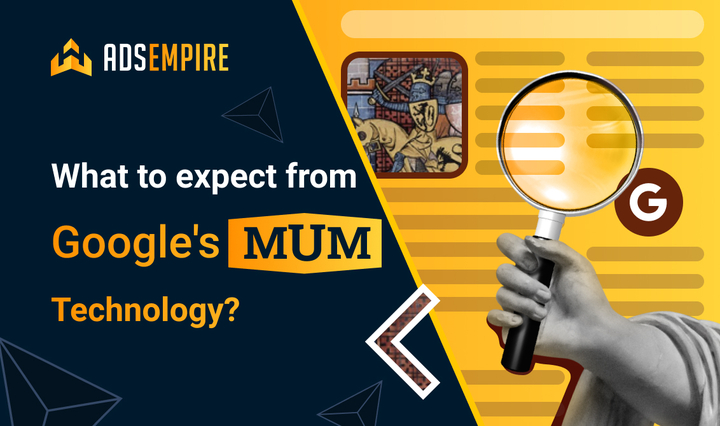Here’s the thing: a defining moment when marketers couldn’t ignore search channels is long gone. For years now, internet users have been making numerous search queries – all for the sake of resolving everyday issues, locating specific companies, or finding new content.
Eventually, the number of daily searches hit a 3.5 billion mark on Google alone. It might seem like marketers unlocked the secret of successful content creation. In a nutshell, it’s all about driving organic traffic, regular publishing, and long-tail keywords.
At some point, marketers using this approach have hit the wall. While search and content changed dramatically, so did search engines. One of the latest Google updates is geared towards making the search process more inclusive and intuitive.
What does it mean for publishers, SEO experts, advertisers, and agencies? Let’s take a closer look at Google’s MUM update and its potential impact.
MUM Update Explained
Let’s start with the name. MUM stands for Multitask Unified Model and aims to respond to the demands of a modern search by utilizing an AI-powered algorithm.
It’s no secret that users often face search, language, and geographical barriers when looking for information. Google’s MUM removes these barriers by eliminating the need to conduct multiple searches. In a nutshell, this update helps the search engine to offer solutions based on interpretations of texts, images, podcasts, videos, and other content.
MUM enables the search engine to understand and process more than 70 languages. Since it aims to serve only insightful, helpful, and relevant information, it can redefine the overall relevance of search results. In other words, it ensures a comprehensive search experience regardless of the query complexity. But bear in mind that user discretion is still advised.
Naturally, the algorithm will see several iterations to ensure it has no machine learning biases. That’s why Google is planning to follow these steps:
- Collect feedback from people through the Search Quality Rater Guidelines to understand how most users look for information on the Internet
- MUM will undergo a process similar to the BERT update in 2019
- Apply the findings from the latest research on ways to reduce the carbon footprint of neural network training systems
The Importance Of MUM
Why is it so important? First and foremost, it’s user-friendly. On top of that, it’s meant to be faster, more far-reaching, detailed, and accurate. Without the language barriers and search dropping in the picture, the questions people ask and comparisons they need will be analyzed from all angles in a shorter time.
Let’s face it: marketers relied heavily on SEO content and keywords for a very long time. But make no mistake, it doesn’t mean that SEO will cease to exist. On the contrary, it will keep transforming into more natural and friendly and, as a result, benefit the new search algorithm.
Advantages Of MUM
MUM is an excellent example of thinking outside the box. This update will utilize the untapped potential of SEO and SERP.
What does it mean for marketers in the long run? Well, it means that enterprises and content creators will have to factor in user intent and customer journey to a larger extent. Given that both are multilayered and complex, modern marketers will have to tap into them and carry out a careful analysis instead of generalizing these categories.
Here’s the thing: modern users want to get more without long wait times. Since the algorithm is AI-powered, it will enable Google to process and analyze the intent regularly. Ultimately, it means that the search engine will get closer to meeting these needs, bringing more varied and relevant content, and understanding users better.
What Marketers Need To Do
Here’s a short list of suggestions that can help you tame the new algorithm:
- Keep creating high-quality and relevant content. What constitutes relevant content in this case? First of all, it should be tangentially related to similar or associated topics. Besides, it should answer the questions and attract attention. Using relevant images or videos will add value and help with the ranking.
- Incorporate multilingual SEO. While it might not affect the regional ranking, you can still use it to boost the interest of your audience and the relevance of your content.
- Elevate brand awareness and loyalty through content. Bear in mind that you need to create and share engaging and informative content. Adding structured data or using other media or approaches to diversify content (podcasts, webinars, educational videos, etc.) is a must if you want to stay competitive.
Conclusion
Marketers are no strangers to breaking down barriers. The same is true of the MUM update. Creating MUM-friendly content implies focusing on its quality. Keeping it engaging and valuable to the end-user means that you’re just a hop, skip, and a jump away from ranking high.
Naturally, there are still many questions to be asked about the update and its future iterations. But instead of worrying about what’s to come, think cold, keep your content relevant and diverse, test and improvise. After all, adjusting is what marketers do best.






